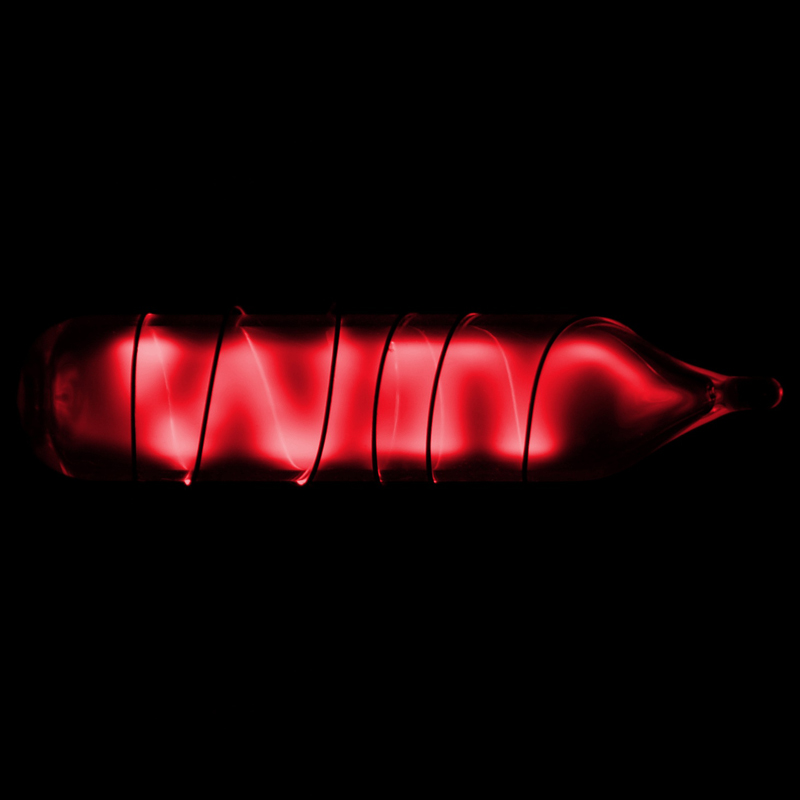रेडन
86
Rn
समूह
18
आवर्त
6
ब्लॉक
p
प्रोटॉन
इलेक्ट्रॉन्स
न्यूट्रॉन
86
86
136
सामान्य गुण
परमाणु संख्या
86
परमाणु भार
[222]
द्रव्यमान संख्या
222
श्रेणी
अक्रिय गैस
रंग
वर्णहीन
रेडियोधर्मी
हाँ
The name was derived from radium; called niton at first, from the Latin word nitens meaning shining
क्रिस्टल की संरचना
लागू नहीं
इतिहास
Radon was discovered in 1900 by Friedrich Ernst Dorn in Halle, Germany.
He reported some experiments in which he noticed that radium compounds emanate a radioactive gas.
In 1910, Sir William Ramsay and Robert Whytlaw-Gray isolated radon, determined its density, and determined that it was the heaviest known gas.
He reported some experiments in which he noticed that radium compounds emanate a radioactive gas.
In 1910, Sir William Ramsay and Robert Whytlaw-Gray isolated radon, determined its density, and determined that it was the heaviest known gas.
इलेक्ट्रॉन प्रति शेल
2, 8, 18, 32, 18, 8
इलेक्ट्रॉन कॉन्फिगरेशन
[Xe] 4f14 5d10 6s2 6p6
Upon condensation, radon glows because of the intense radiation it produces
भौतिक गुण
अवस्था
गैस
घनत्व
0.00973 g/cm3
गलनांक
202 K | -71.15 °C | -96.07 °F
क्वथनांक
211.3 K | -61.85 °C | -79.33 °F
विलय ऊष्मा
3 कि.जूल/मोल
वाष्पीकरण ऊष्मा
17 कि.जूल/मोल
विशिष्ट ऊष्मा क्षमता
0.094 जूल/ग्राम•केल्विन
पृथ्वी की पपड़ी में प्रचुरता
लागू नहीं
ब्रह्मांड में प्रचुरता
लागू नहीं

सी ए एस संख्या
10043-92-2
PubChem सी.आई.डी. संख्या
24857
परमाण्विक गुण
परमाणु का त्रिज्या
120 pm
संयोजी त्रिज्या
150 pm
इलेक्ट्रोनेगेटिविटी
-
आयनीकरण ऊर्जाएं
10.7485 eV
परमाणु आयतन
50.5 से.मी.३/मोल
तापीय चालकता
0.0000364 W/cm·K
ऑक्सीकरण स्थितियां
2, 4, 6
उपयोग
Radon is used in hydrologic research that studies the interaction between ground water and streams.
Radon has been produced commercially for use in radiation therapy.
Radon has been used in implantable seeds, made of gold or glass, primarily used to treat cancers.
Radon has been produced commercially for use in radiation therapy.
Radon has been used in implantable seeds, made of gold or glass, primarily used to treat cancers.
Radon is highly radioactive and a carcinogen
समस्थानिक
स्थिर आइसोटोप
-अस्थिर समस्थानिक
195Rn, 196Rn, 197Rn, 198Rn, 199Rn, 200Rn, 201Rn, 202Rn, 203Rn, 204Rn, 205Rn, 206Rn, 207Rn, 208Rn, 209Rn, 210Rn, 211Rn, 212Rn, 213Rn, 214Rn, 215Rn, 216Rn, 217Rn, 218Rn, 219Rn, 220Rn, 221Rn, 222Rn, 223Rn, 224Rn, 225Rn, 226Rn, 227Rn, 228Rn